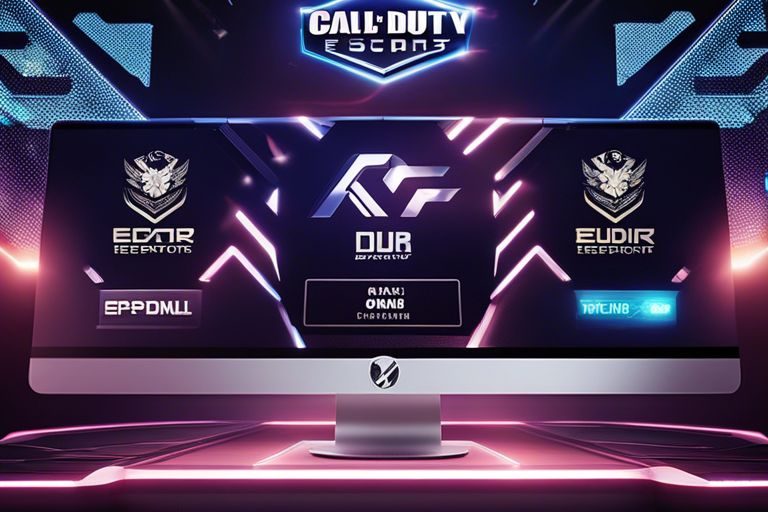Fortnite, the popular Battle Royale game, offers an extensive range of skins that allow players to express their individuality and stand out on the virtual battlefield. While many skins are highly sought after, some skins can turn out to be a significant disadvantage for players. These so-called pay-to-lose skins may possess visual appeal but can hinder gameplay performance, leaving players vulnerable and struggling to secure victories.
Loki
The arrival of Loki, Thor’s mischievous brother and a popular Marvel anti-hero, in Fortnite created excitement among fans. However, this thrill quickly dissipated as players realized the inherent flaw of the Loki skin. The massive horns adorning Loki’s headgear made him easily visible from afar, making it challenging to remain unnoticed. Consequently, the Loki skin became synonymous with a pay-to-lose disadvantage, leading players to avoid using it to prevent being an easy target.
Nightlife
At first glance, the Nightlife skin captures attention with its vibrant colors and enticing appearance. It radiates a sense of fun and exuberance, seemingly perfect for any party. However, when it comes to tactical gameplay, the Nightlife skin falls short. Its excessive brightness turns players into walking disco balls, rendering any attempts at stealth ineffective. In a game where strategic movements can determine success, the Nightlife skin becomes more of a liability than an asset.
Big Chuggus
Among the Fortnite skins, Big Chuggus stands out for its sheer bulkiness. This skin boasts an imposing presence, but it also comes with a noticeable disadvantage. Due to its larger hitbox, enemies can easily target and hit players donning the Big Chuggus skin. Aware of this drawback, many players opt to steer clear of this outfit, favoring sleeker alternatives that provide a smaller target and a greater chance of survival.
Dante
During Halloween 2018, the Fortnite Item Shop introduced the Dante skin, inspired by the vibrant aesthetics of the Dia de los Muertos celebration. While visually captivating, the Dante skin suffers from a significant flaw. Its reactive and glow-in-the-dark features might seem appealing initially, but they undermine players’ ability to remain inconspicuous during nighttime gameplay. Illuminated by their own skin, players become beacons for opponents, making the Dante skin an unfavorable choice for those aiming to evade detection.
Gunnar
As one of the latest additions to the Fortnite Chapter 3 Season 2 Battle Pass, the Gunnar skin exemplifies the pay-to-lose archetype. Its substantial build and larger hitbox make it an easy target for adversaries. Moreover, the outfit styles offered by Gunnar fail to provide any strategic advantage or means for players to employ stealth tactics effectively. Consequently, players tend to avoid this skin, favoring alternatives that offer a higher chance of outmaneuvering opponents.
Ninja
The Ninja skin, inspired by the renowned Twitch streamer Tyler “Ninja” Blevins, stands as one of the most popular skins in Fortnite. Unfortunately, popularity does not equate to practicality in this case. The Ninja skin features reactive elements such as a bandana that lights up after players achieve kills, making them more noticeable to others. Given the skin’s eye-catching nature and Ninja’s widespread fame, players wearing this skin often become targets of choice, putting them at a distinct disadvantage.
Player Preferences
Given the evident disadvantages posed by pay-to-lose skins, players have developed a tendency to avoid them in favor of skins that offer a competitive advantage. While pay-to-lose skins may hold allure as collector’s items, they rarely see the light of day in actual combat scenarios. Players lean towards skins that provide a more streamlined appearance, devoid of excessive visuals that could compromise their ability to survive and succeed. In a game where victory matters, practicality takes precedence over mere aesthetics.
Conclusion
Fortnite’s vast selection of skins caters to a wide range of player preferences, offering numerous options for customization. However, players must exercise caution when selecting their outfits, as some skins can prove to be a significant disadvantage in gameplay. The pay-to-lose skins discussed in this article demonstrate the importance of practicality over visual appeal. While these skins may attract collectors, they often fall short when it comes to providing a strategic advantage on the battlefield. Players are wise to choose skins that enhance their chances of survival and success, embracing functionality over mere aesthetics.
FAQs
How do Fortnite skins enhance gameplay?
Fortnite skins are purely cosmetic and do not offer any gameplay advantages.
Can pay-to-lose skins be obtained for free?
Pay-to-lose skins are typically obtained through purchases in the Item Shop or Battle Pass and cannot be acquired for free.
Are pay-to-lose skins exclusive to Fortnite?
Pay-to-lose skins are not exclusive to Fortnite. Other games may also have cosmetic items that provide disadvantages in gameplay.
What should players consider when choosing a skin?
Players should consider their preferred playstyle, visual aesthetics, and potential gameplay advantages or disadvantages before choosing a skin.
Are pay-to-lose skins banned in competitive Fortnite tournaments?
Competitive Fortnite tournaments generally have specific guidelines regarding which skins are allowed. Pay-to-lose skins may be restricted to maintain fairness.
Can pay-to-lose skins be modified by players?
Players cannot modify pay-to-lose skins themselves. Skins are fixed in their design and cannot be altered.
Are there any advantages to using pay-to-lose skins?
Pay-to-lose skins are primarily collected for their visual appeal rather than their gameplay advantages.
How can players showcase their unique skins to others?
Players can showcase their unique skins by wearing them during matches, participating in in-game events, or sharing screenshots and videos on social media.
Can pay-to-lose skins be traded or sold?
As of now, Fortnite does not offer a direct trading or selling system for skins. Skins are tied to the player’s account and cannot be transferred.
Do pay-to-lose skins affect weapon damage or abilities?
Pay-to-lose skins do not impact weapon damage or abilities. They only affect the visual appearance of the player’s character.
Can pay-to-lose skins be refunded?
Players can typically refund skins within a certain time frame, as specified by Epic Games’ refund policy. However, this option may have limitations.
Are there any pay-to-lose skins that players still enjoy using?
While pay-to-lose skins are generally avoided, some players may still enjoy using them for their unique design or personal preferences, despite their disadvantages.
Are pay-to-lose skins more popular among casual or competitive players?
Pay-to-lose skins are generally less popular among competitive players who prioritize gameplay advantages. Casual players may be more inclined to choose skins based on personal preference.
Can pay-to-lose skins be used strategically in specific game modes?
While pay-to-lose skins may not provide direct strategic advantages, players can use them to express their individuality or stand out in specific game modes.
How often does Epic Games release new pay-to-lose skins?
Epic Games regularly releases new skins in Fortnite, including both pay-to-lose and other cosmetic options, to cater to the diverse preferences of players.
Are pay-to-lose skins more common in certain seasons or events?
Pay-to-lose skins can be released in any season or event, depending on the design and theme chosen by Epic Games.
Can pay-to-lose skins be gifted to other players?
Some skins can be gifted to other players through Fortnite’s gifting feature, allowing players to share their pay-to-lose skins with friends.
Are pay-to-lose skins popular among content creators and streamers?
Content creators and streamers may use a variety of skins for entertainment purposes, including pay-to-lose skins, to engage their audience and showcase different styles.
How do pay-to-lose skins impact the overall Fortnite experience?
Pay-to-lose skins add diversity to the Fortnite experience by offering unique visual options, despite their potential disadvantages.
Can pay-to-lose skins be customized with additional accessories?
Pay-to-lose skins usually come as complete outfits, and additional accessories cannot be added or customized.
Are there any pay-to-lose skins that provide audio disadvantages?
Pay-to-lose skins primarily focus on visual elements and do not typically affect audio cues or disadvantages.
Do pay-to-lose skins affect the player’s movement speed?
Pay-to-lose skins do not affect the player’s movement speed or any other gameplay mechanics.
Can players earn pay-to-lose skins through in-game challenges?
Pay-to-lose skins are primarily obtained through direct purchases and are not usually rewards for in-game challenges.
Are pay-to-lose skins designed to be deliberately unappealing?
Pay-to-lose skins are not intentionally designed to be unappealing. Their disadvantages arise from specific design choices, which may compromise gameplay performance.
How can players provide feedback on pay-to-lose skins to Epic Games?
Players can provide feedback on pay-to-lose skins or any other aspect of Fortnite through official channels, such as Epic Games’ website or forums.
Are there any pay-to-lose skins that have been reworked or buffed by Epic Games?
Epic Games occasionally makes adjustments to skins based on player feedback or to address any unintended disadvantages, but this is not a common practice.
Can pay-to-lose skins be used effectively in certain game modes or strategies?
While pay-to-lose skins are generally avoided for competitive gameplay, players may find creative ways to utilize them in casual game modes or for personal challenges.
Are pay-to-lose skins more popular among veteran or new players?
Pay-to-lose skins’ popularity is not necessarily tied to a player’s experience level but rather their individual preferences and understanding of gameplay advantages.
Can players test pay-to-lose skins before purchasing them?
Fortnite does not provide a specific testing feature for skins, but players can watch gameplay videos or streams to get an idea of how pay-to-lose skins look in action.
Can players request refunds for pay-to-lose skins after experiencing disadvantages?
Refunds for pay-to-lose skins are generally based on Epic Games’ refund policy, which may have specific conditions and time limits.
Are pay-to-lose skins more prevalent in certain regions or player communities?
The preference for pay-to-lose skins can vary among regions and player communities based on cultural factors and individual tastes.
Can pay-to-lose skins impact the overall game balance in Fortnite?
The impact of pay-to-lose skins on overall game balance is minimal since their disadvantages primarily relate to visual elements rather than gameplay mechanics.
Are there any pay-to-lose skins that have become iconic despite their disadvantages?
While pay-to-lose skins are generally less iconic, some may still garner attention and become memorable due to their unique design or rarity.
Can players provide suggestions for new pay-to-lose skins to Epic Games?
Players can share their suggestions for new skins, including pay-to-lose options, through Epic Games’ official channels or community feedback platforms.
Are pay-to-lose skins more prevalent among certain age groups?
The preference for pay-to-lose skins is not necessarily tied to age groups, as players of all ages have different aesthetic preferences and gameplay priorities.
Can pay-to-lose skins be used strategically to mislead opponents?
While pay-to-lose skins may not provide direct strategic advantages, players can use their unique appearance to surprise or confuse opponents in specific scenarios.
Are pay-to-lose skins considered collector’s items?
Pay-to-lose skins can be sought after by collectors due to their unique disadvantages and rarity, adding to their appeal beyond gameplay advantages.
Can players switch between pay-to-lose and pay-to-win skins during matches?
Players can switch between different skins before or after matches, allowing them to choose the most suitable option based on gameplay preferences and strategies.
Do pay-to-lose skins affect the hit registration or damage calculation in Fortnite?
Pay-to-lose skins do not affect hit registration or damage calculation in Fortnite, as these mechanics are determined by the game’s core systems.
Are pay-to-lose skins more popular in specific game modes or events within Fortnite?
The popularity of pay-to-lose skins can vary across different game modes and events, depending on the player’s playstyle and personal preferences.




